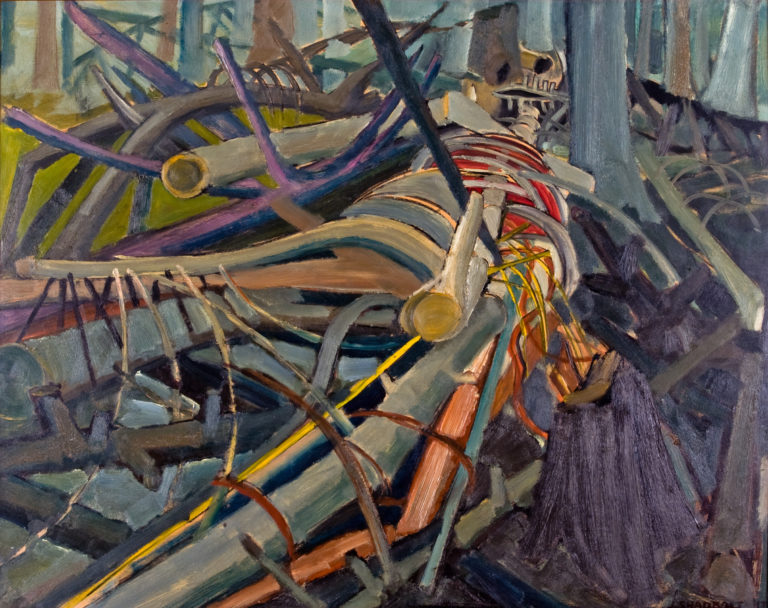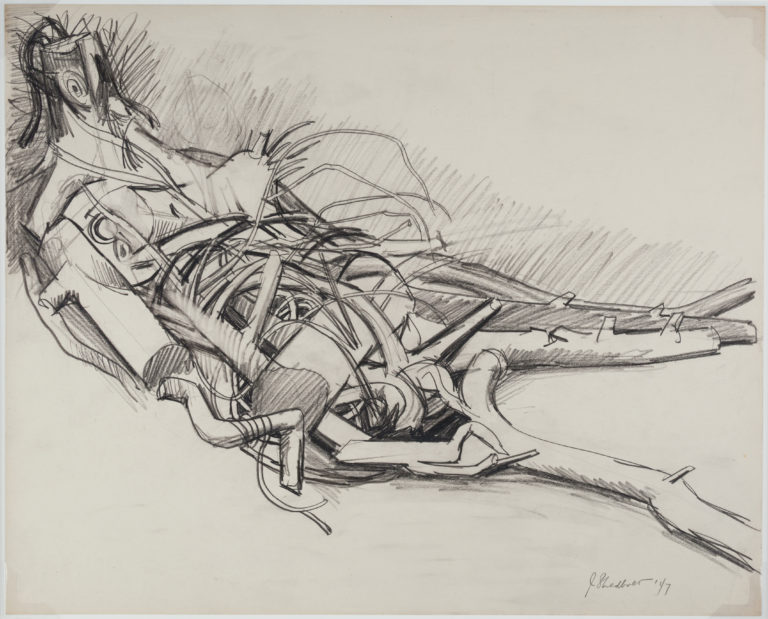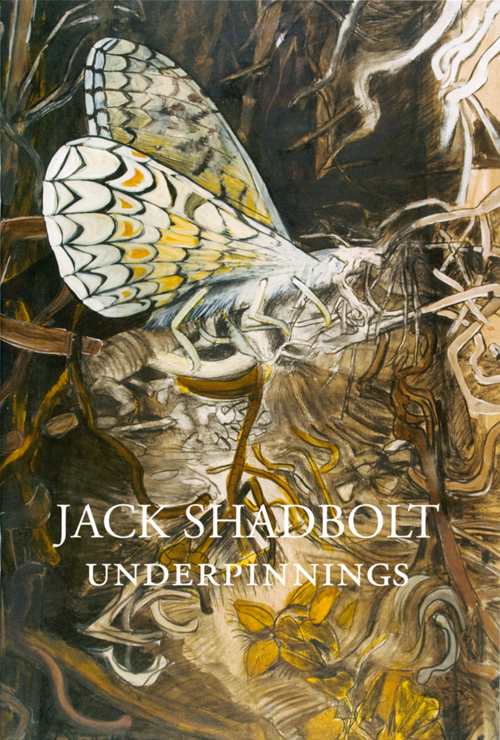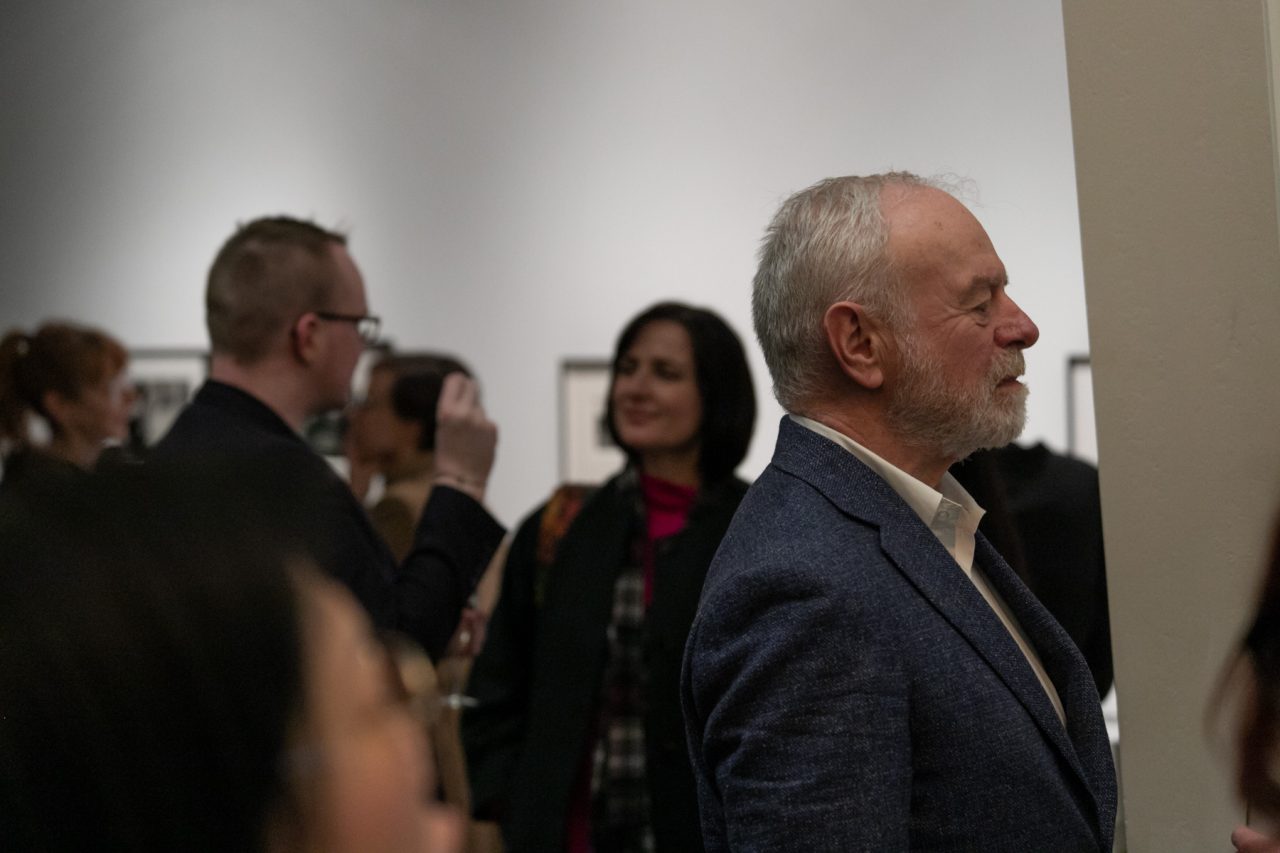1 May – 23 Aug 2009
Morris and Helen Belkin Art Gallery
Jack Shadbolt: Underpinnings
-
Jack Shadbolt
ArtistAs one of Canada’s most important artists, Jack Shadbolt (1909-1998) is known for his paintings and murals that draw from his personal experiences and from the social and political conflicts that have taken place in British Columbia and world history such as the struggles of the Indigenous people, the Second World War and the environmental movement. Shadbolt was born in England in 1909 and with his family, came to Victoria, BC in 1921. He lived and taught in Victoria, Vancouver and Burnaby. His work is represented in all the major galleries across Canada as well as in corporate and private collections. Shadbolt’s numerous awards include the Order of Canada in 1972 and an Honorary Degree from the University of British Columbia. In 1987, he and his wife, art historian and curator Doris Shadbolt, established the Vancouver Institute for Visual Arts (VIVA), which supports and recognizes the achievements of artists in British Columbia.
Read More
-
Scott Watson
CuratorScott Watson (Canadian, b. 1950) is Director Emeritus and Research Fellow at the Morris and Helen Belkin Art Gallery, University of British Columbia. A curator whose career has spanned more than thirty-five years, Watson is internationally recognized for his research and work in curatorial and exhibition studies, contemporary art and issues, and art theory and criticism. His distinctions include the Hnatyshyn Foundation Award for Curatorial Excellence in Contemporary Art (2010); the Alvin Balkind Award for Creative Curatorship in BC Arts (2008) and the UBC Dorothy Somerset Award for Performance Development in the Visual and Performing Arts (2005). Watson has published extensively in the areas of contemporary Canadian and international art. His 1990 monograph on Jack Shadbolt earned the Hubert Evans Non-Fiction Prize in 1991. Recent publications include Letters: Michael Morris and Concrete Poetry (2015); Thrown: British Columbia’s Apprentices of Bernard Leach and their Contemporaries (2011), a finalist for the 2012 Roderick Haig-Brown Regional Prize; “Race, Wilderness, Territory and the Origins of the Modern Canadian Landscape” and “Disfigured Nature” (in Beyond Wilderness, McGill University Press, 2007); and “Transmission Difficulties: Vancouver Painting in the 1960s” (in Paint, Vancouver Art Gallery, 2006).
Read More
Jack Shadbolt (1909-1998) is one of Canada’s most important artists. He is known for his paintings and murals that draw from his personal experiences and from the social and political conflicts that have taken place in British Columbia and world history such as the struggles of the Indigenous people, the Second World War and the environmental movement. Jack Shadbolt: Underpinnings is a celebration of the artist’s centenary and includes over 150 drawings and sketches from the Belkin’s collection, as well as journal entries and archival materials from the UBC Library Rare Books and Special Collections. The works of art and documents date from the 1930s to the 1980s and many are being exhibited for the first time. One section of the exhibition reveals the artist’s technical approaches to large-scale mural work and also shows the artist’s creative approaches to themes which continue to resonate today.
Over the past two decades, the Belkin has benefited from a rich relationship with the Shadbolts. The artworks that have been gifted by Jack and Doris Shadbolt from 1996 to 1998, by Doris Shadbolt in 1998 after the death of her husband and by the Estate of Doris Shadbolt from 2008 to 2009 have deepened the Belkin’s existing collection of important work by this artist. The works are significant to the understanding of Shadbolt’s production and to the history of Canadian art.
Download the handout
With support from the British Columbia History Digitization Program through the UBC Irving K. Barber Learning Centre and to coincide with the centennial of the artist’s birth and this exhibition, the Belkin digitized its collection of 490 of Shadbolt’s collages, drawings, paintings and prints dating from 1938 to 1998. These digital assets are part of the Belkin’s searchable online Collections Database.

Jack Shadbolt, Image in Cedar Slash, 1947. Gift of the Estate of Sheila and Wilfred Watson, 1998.

Jack Shadbolt, Image in Cedar Slash, 1947. Gift of Doris Shadbolt, 1998.

Jack Shadbolt: Underpinnings (2009), with essays by Robert Linsley and Scott Watson.
-
Jack Shadbolt
ArtistAs one of Canada’s most important artists, Jack Shadbolt (1909-1998) is known for his paintings and murals that draw from his personal experiences and from the social and political conflicts that have taken place in British Columbia and world history such as the struggles of the Indigenous people, the Second World War and the environmental movement. Shadbolt was born in England in 1909 and with his family, came to Victoria, BC in 1921. He lived and taught in Victoria, Vancouver and Burnaby. His work is represented in all the major galleries across Canada as well as in corporate and private collections. Shadbolt’s numerous awards include the Order of Canada in 1972 and an Honorary Degree from the University of British Columbia. In 1987, he and his wife, art historian and curator Doris Shadbolt, established the Vancouver Institute for Visual Arts (VIVA), which supports and recognizes the achievements of artists in British Columbia.
Read More
-
Scott Watson
CuratorScott Watson (Canadian, b. 1950) is Director Emeritus and Research Fellow at the Morris and Helen Belkin Art Gallery, University of British Columbia. A curator whose career has spanned more than thirty-five years, Watson is internationally recognized for his research and work in curatorial and exhibition studies, contemporary art and issues, and art theory and criticism. His distinctions include the Hnatyshyn Foundation Award for Curatorial Excellence in Contemporary Art (2010); the Alvin Balkind Award for Creative Curatorship in BC Arts (2008) and the UBC Dorothy Somerset Award for Performance Development in the Visual and Performing Arts (2005). Watson has published extensively in the areas of contemporary Canadian and international art. His 1990 monograph on Jack Shadbolt earned the Hubert Evans Non-Fiction Prize in 1991. Recent publications include Letters: Michael Morris and Concrete Poetry (2015); Thrown: British Columbia’s Apprentices of Bernard Leach and their Contemporaries (2011), a finalist for the 2012 Roderick Haig-Brown Regional Prize; “Race, Wilderness, Territory and the Origins of the Modern Canadian Landscape” and “Disfigured Nature” (in Beyond Wilderness, McGill University Press, 2007); and “Transmission Difficulties: Vancouver Painting in the 1960s” (in Paint, Vancouver Art Gallery, 2006).
Read More
Related
-
Exhibition
16 January 1999 – 27 February 1999
Heart of Darkness: Emily Carr & Jack Shadbolt
This group of over 18 works from the Belkin Art Gallery Collection will be the first two-person exhibition of British Columbia’s greatest artists. The theme, “Heart of Darkness,” is borrowed from Joseph Conrad to suggest that the work of both artists is not just about the fecundity of nature in BC, but about the place where nature and culture meet. Both artists wanted to imagine nature anew and specific to this place and deal with colonial anxiety, the logging industry and First Nations Art.
[more] -
News
10 Jul 2021
Scott Watson Steps Down as Director of the Belkin

On June 30, 2021, Scott Watson stepped down as Director and Curator of the Morris and Helen Belkin Art Gallery. During his 32-year tenure as Director and Curator – of the UBC Fine Arts Gallery (1989-1995) and then of the Belkin (1995-2021) – Watson brought a strong innovative curatorial direction and management of the gallery’s exhibitions, collections, programs and publications by consistently placing Canadian, Indigenous and international practices together to allow for a complex dialogue to emerge over time.
[more]